Farmers, businesses and cooperatives must work closely together and reorganize production to make the entire process of participating in the value chain transparent. In particular, cooperatives and businesses need to pay attention to financial transparency, environmental improvement and governance. These factors are "plus points" in loan applications...
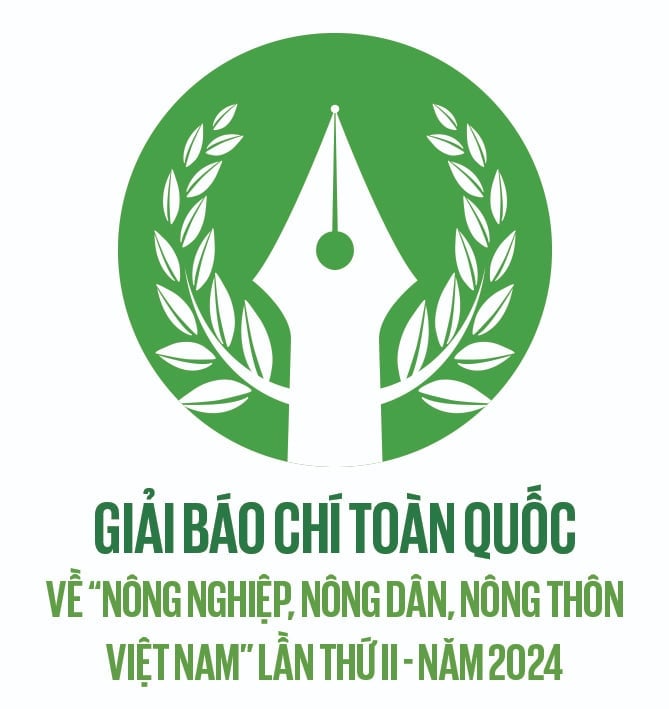
Mr. Le Duc Thinh - Director of the Department of Economic Cooperation and Rural Development (Ministry of Agriculture and Rural Development of Vietnam) said so when talking with reporters of Nong Thon Ngay Nay/Dan Viet Newspaper.
Could you tell us about the current demand for green credit capital in the agricultural and rural sectors?
- It must be affirmed that the demand for green credit capital of farmers, cooperatives and enterprises is very large. The project of 1 million hectares of high-quality, low-emission rice associated with green growth from now until 2030 alone is expected to require capital of about 2.7 billion USD. Along with that, the pilot project to build a standard agricultural and forestry raw material area for domestic consumption and export in the period of 2022-2025 requires a total budget of about 2,500 billion VND.
In addition, the Ministry of Agriculture and Rural Development is also implementing Decision 3444/QD-BNN-KH on the plan to implement the national strategy on green growth for the period 2021-2030 and implementing the Project to improve the capacity to adapt to climate change of agricultural cooperatives in the Mekong Delta for the period 2021-2025, along with many other related projects and programs...

Mr. Le Duc Thinh - Director of the Department of Cooperative Economics and Rural Development (Ministry of Agriculture and Rural Development) affirmed that the demand for green credit capital of farmers, cooperatives and enterprises is very large. Photo: K. Nguyen
In fact, agriculture is not only the main economic sector of Vietnam but also the source of livelihood for the majority of the population, so the general capital demand for production is very large. However, the agricultural sector is the second largest source of greenhouse gas emissions in Vietnam, after the industrial sector (according to research results of the Food and Agriculture Organization of the United Nations and the World Bank).
Therefore, the above projects all aim to transform production towards green and sustainable development, with the main goal of reducing production costs, reducing environmental pollution, protecting natural resources and increasing farmers' income.
With an export-oriented economy like Vietnam, the green transformation of enterprises, cooperatives and farmers is considered inevitable and vital. In this context, green credit is an important financial tool, helping actors participating in the production chain access preferential capital sources to invest in sustainable agricultural projects, organic agriculture, circular agriculture, etc.
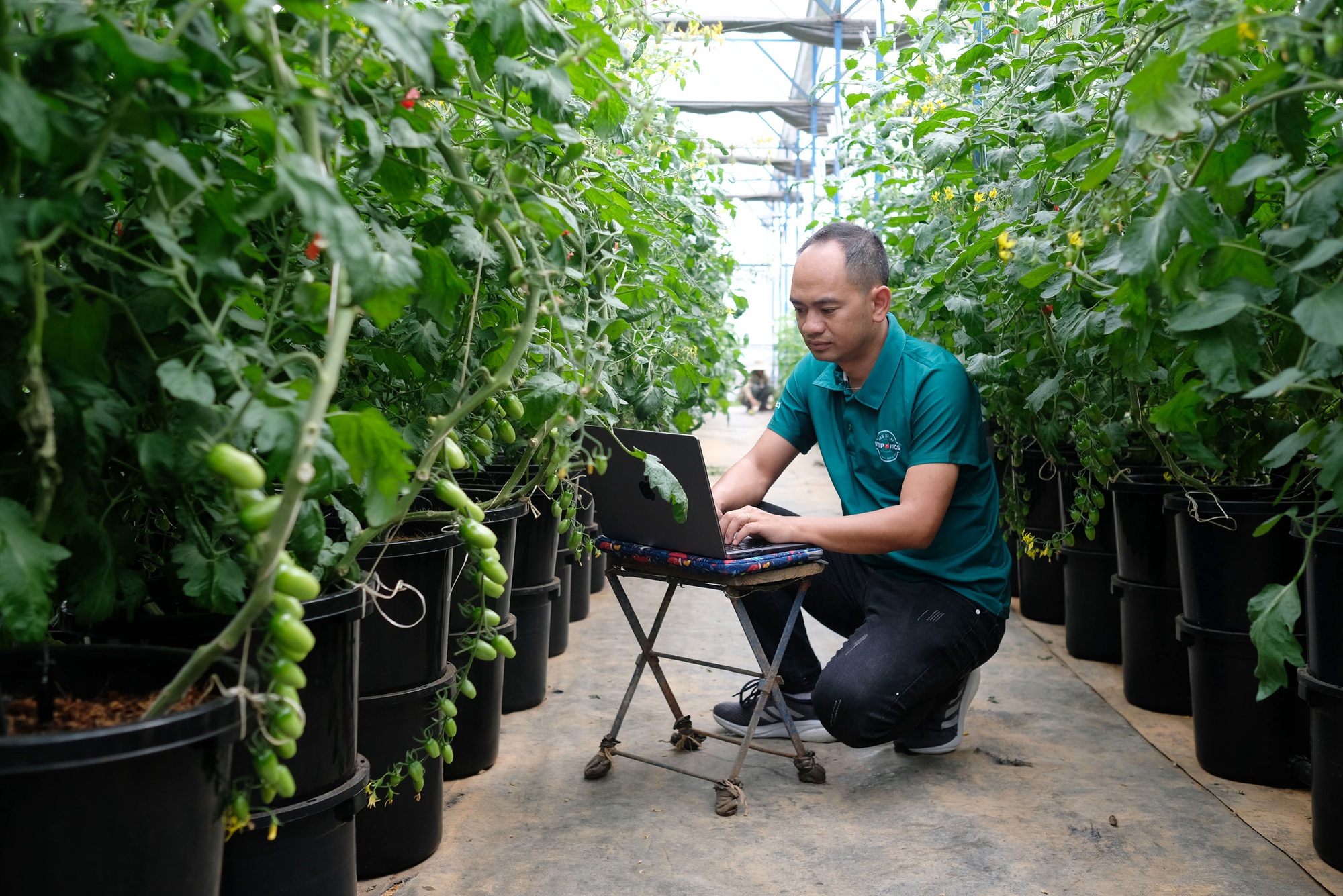
Mr. Nguyen Duc Huy (Da Lat City, Lam Dong) with his tomato garden using the care technology he founded, controlled by phone and computer. Photo: Van Long
However, not all people, businesses or projects can easily access green capital?
- Yes, accessing this green credit source is still very difficult, with many problems. All banks, Vietinbank and Agribank, lend a lot to customers who are farmers and cooperatives, but there are 2 groups of problems that have not been resolved yet, which are chain linkage and green credit to serve the transformation of the production system towards green and sustainable direction.
First of all, about the loan conditions. Normally, when borrowing for production linkage, the actors in the chain (cooperatives, enterprises, household groups, farms) must meet two conditions: Have collateral; have a clear loan project. But both of these conditions, the chains are facing difficulties due to limited capacity, qualifications, and conditions.
Second, regarding lending conditions, basically all credit systems lend using collateral. Decree 55 on credit stipulates lending based on cash flow and unsecured lending (for example, cooperatives can borrow 1 billion VND; farmers and farms can borrow 500 million VND without collateral), but regulations are one thing and implementation is another.
By the end of September 2024, rice credit in the Mekong Delta region reached about 124,000 billion VND, an increase of 18% compared to the end of 2023, accounting for about 53% of outstanding rice credit nationwide.
Although it is called unsecured loan, the bank still requires assets to be deposited for the bank to manage, even though it may not be collateral. But how can the farmer use that asset to get an unsecured loan if it is already deposited elsewhere?
Second, some projects in the value chain that people borrow from do not invest in production but to rotate capital, purchase raw materials, and advance money to farmers to build linkage contracts. In some countries, in these cases, they will not base on credit but through agricultural product purchase contracts and agricultural product transaction frequency.
But in Vietnam, credit institutions do not lend in this direction because the agricultural value chains in our country are not transparent enough and there is not enough data for them to trust that these are real transactions.
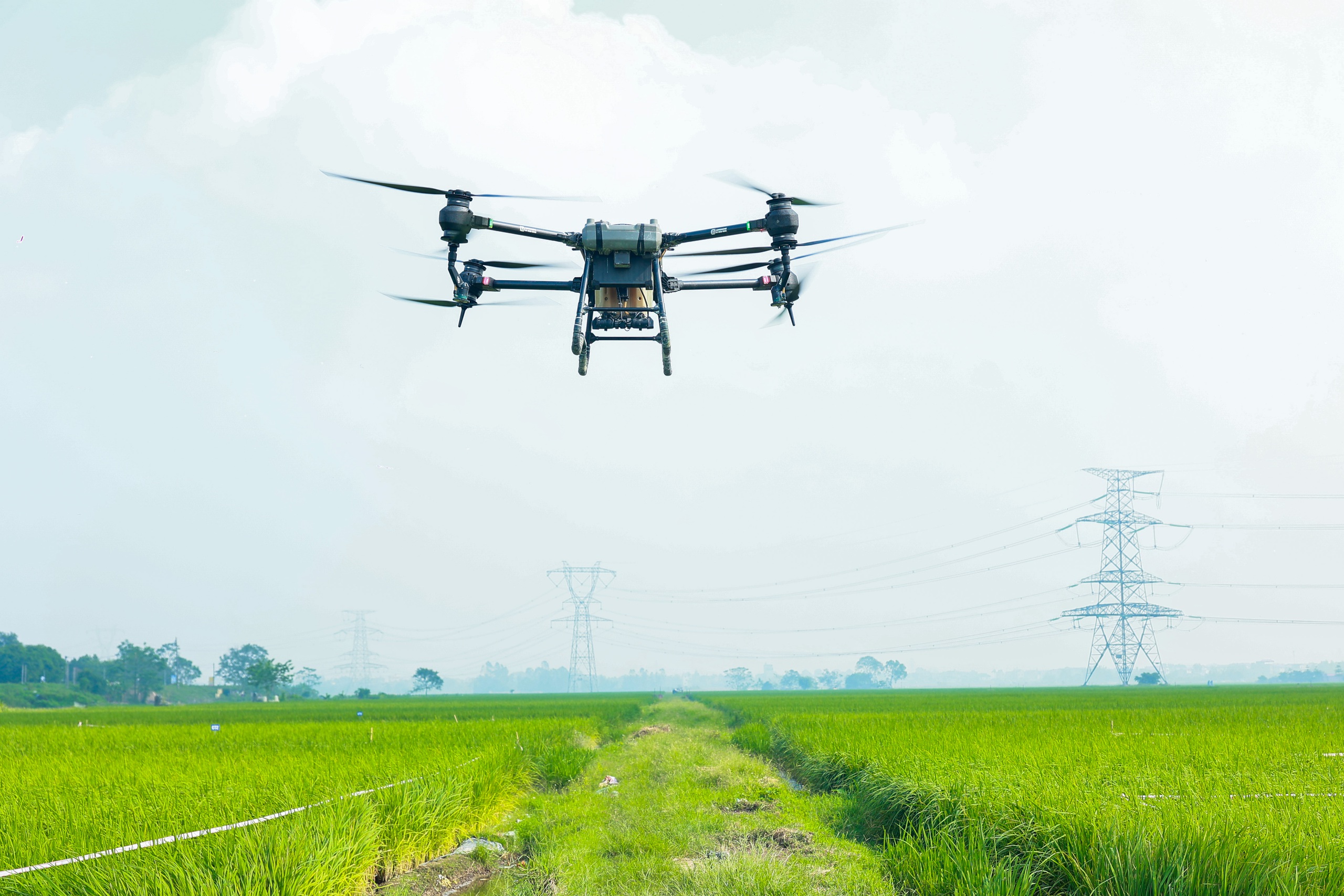
The project of 1 million hectares of high-quality, low-emission rice associated with green growth from now until 2030 in the Mekong Delta provinces alone is expected to require capital of about 2.7 billion USD. Photo: TL
It can be seen that what you just said is not a new cause, but why have these problems not been resolved yet, sir?
- This is not the fault of credit institutions making things difficult, nor is it because farmers or businesses have too weak capacity, but because we currently do not have a clear legal corridor, regulations, or technical standards for green production processes... In short, there is nothing to guarantee the risks for lending institutions, leading to banks having difficulty making decisions on capital injection. Lenders and borrowers cannot come together.
I do not defend banks and credit, but state and local professional agencies must soon announce regulations and technical standards on what constitutes green production and green products, and must soon have certification for that green production chain.
This could have been solved if the professional side, the credit institution, and the implementing side, the farmers, businesses, and cooperatives, had worked closely together to resolve the problems. Accordingly, the bank must propose that the management agency request the Department of Science and Technology and the Department of Finance to announce technical standards for advances in green production, which essentially reduce production costs, increase efficiency, and reduce environmental impacts. For example, how much does 1 hectare of green production cost, how much is the demand, and what is the estimated efficiency?
Farmers, cooperatives, and businesses must reorganize production to make all processes of participation in the value chain transparent. If we continue to do business in the current buying and selling style, we will never achieve sustainable production, let alone get green credit without collateral.
In the long term, banks also need to provide guidance and training on green credit for businesses and cooperatives, and provide training to help people understand the conditions for borrowing according to the green production chain. However, credit institutions are not really interested in this issue yet.
To make the supply-demand relationship between green credit more favorable, especially for farmers to have easier access to green capital, what suggestions and recommendations do you have?
- First of all, the Farmers' Association needs to work with the Ministry of Agriculture and Rural Development to participate in farmers' organizations, build cooperatives and cooperative groups to "solve the problem", that is the most important requirement.
Second, it is necessary to participate in propaganda and training so that farmers can grasp and practice green production techniques well.
Third, enhancing farmers' capacity, including capacity to implement technical processes; capacity to participate in value chains and improving capacity to participate in monitoring and criticism.
We and the Ministry of Agriculture and Rural Development both hope that the Vietnam Farmers' Union will increase its participation and coordination in implementing these tasks, with the ultimate goal of fundamentally changing the production process, reducing costs and increasing the quality of agricultural products, thereby increasing farmers' income.
Thank you!
It is mandatory to join the chain.
On November 7, the State Bank of Vietnam coordinated with the Ministry of Agriculture and Rural Development and the People's Committee of Dong Thap province to organize a conference to deploy the preferential credit program to implement the Project of 1 million hectares of high-quality and low-emission rice in the Mekong Delta. Accordingly, the State Bank of Vietnam approved a minimum preferential loan interest rate reduction of 1% compared to the interest rate that entities are accessing when participating in the Project of 1 million hectares of high-quality rice.
In addition, the loan limit will be expanded according to the nature of the association and production scale. The loan term is suitable for the rotation and progress, production and business cycle, rice cultivation as well as purchasing, processing and temporary storage of rice.
In particular, a mandatory condition for entities (including enterprises, cooperatives, and farmers) to enjoy preferential policies from the preferential credit program is to participate in the linkage chain.
Banks may not require the use of collateral as before. This is a very favorable and preferential condition for the 1 million hectare high-quality rice project, while also encouraging the participation of entities to build a sustainable chain.
At the Conference, the State Bank also requested the Ministry of Agriculture and Rural Development and the People's Committees of the provinces to accelerate the implementation of technical contents related to the agricultural sector to organize the implementation of the program. In particular, it is necessary to identify and announce specialized areas; subjects participating in the linkage; technical and economic norms and actual costs of implementing rice production in the rice linkage under the 1 million hectares of high-quality rice project for Agribank and credit institutions to access and consider lending.

Source: https://danviet.vn/de-cung-cau-von-tin-dung-xanh-gap-nhau-nong-dan-doanh-nghiep-htx-can-minh-bach-chuoi-san-xuat-20241113165259694.htm


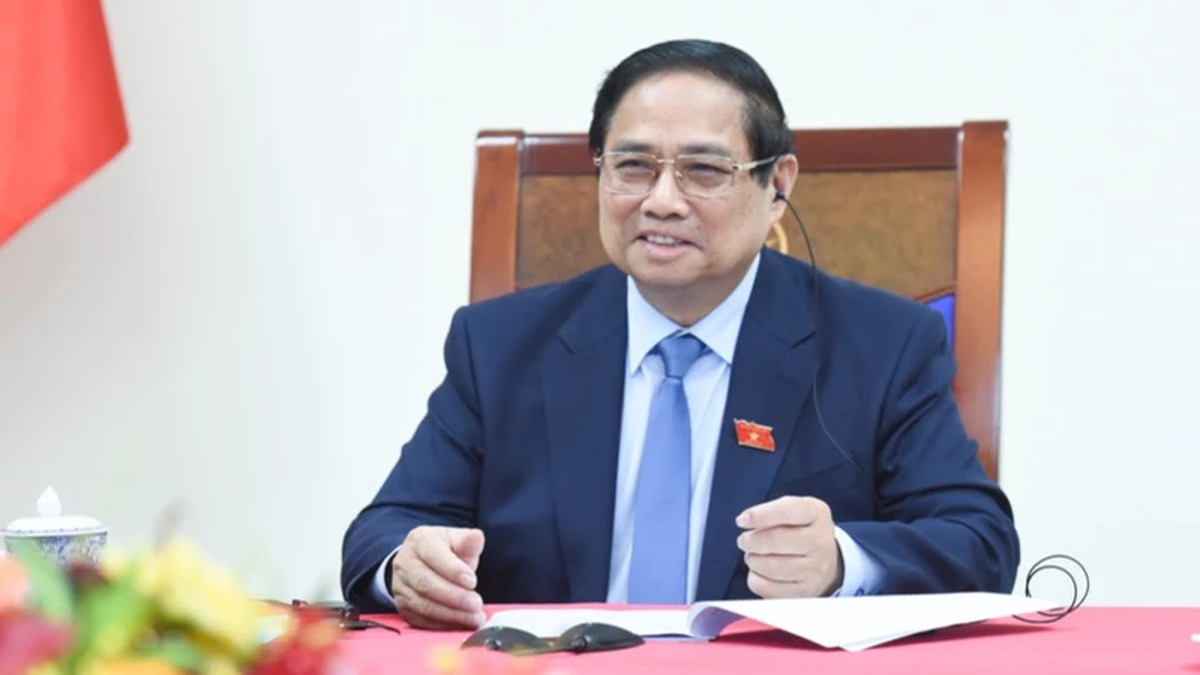
![[Photo] President Luong Cuong presents the decision to appoint Deputy Head of the Office of the President](https://vphoto.vietnam.vn/thumb/1200x675/vietnam/resource/IMAGE/2025/5/8/501f8ee192f3476ab9f7579c57b423ad)

![[Photo] General Secretary concludes visit to Azerbaijan, departs for visit to Russian Federation](https://vphoto.vietnam.vn/thumb/1200x675/vietnam/resource/IMAGE/2025/5/8/7a135ad280314b66917ad278ce0e26fa)
![[Photo] Prime Minister Pham Minh Chinh meets with the Policy Advisory Council on Private Economic Development](https://vphoto.vietnam.vn/thumb/1200x675/vietnam/resource/IMAGE/2025/5/8/387da60b85cc489ab2aed8442fc3b14a)
![[Photo] National Assembly Chairman Tran Thanh Man chairs the meeting of the Subcommittee on Documents of the First National Assembly Party Congress](https://vphoto.vietnam.vn/thumb/1200x675/vietnam/resource/IMAGE/2025/5/8/72b19a73d94a4affab411fd8c87f4f8d)
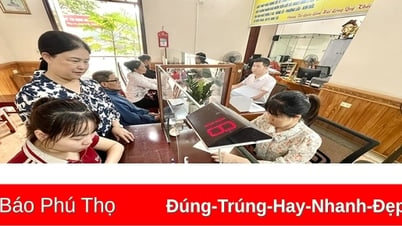



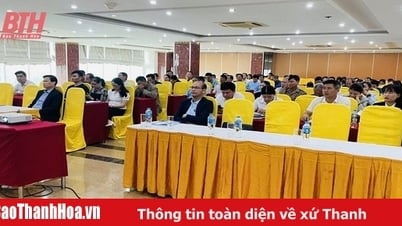
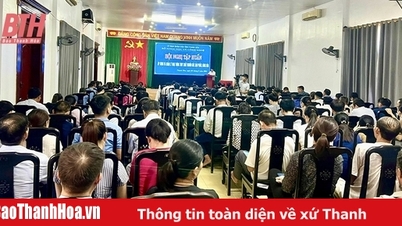

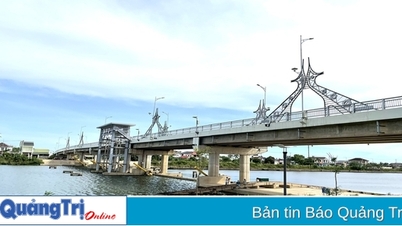

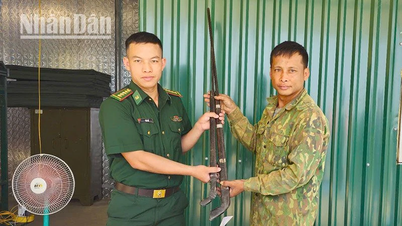
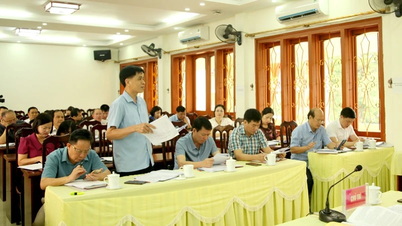
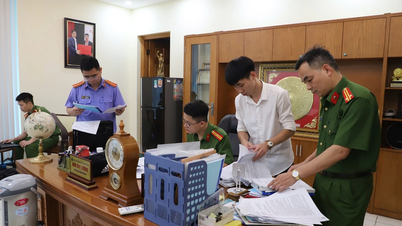
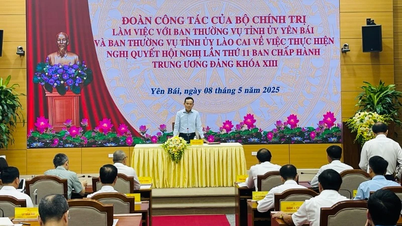
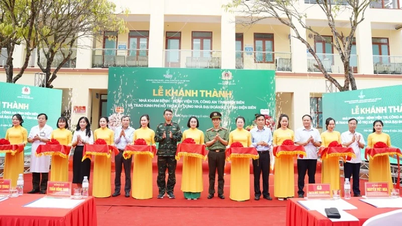
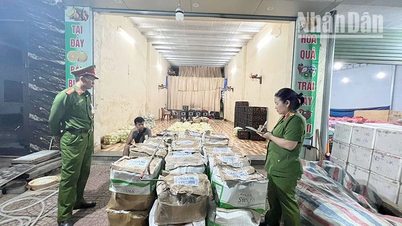




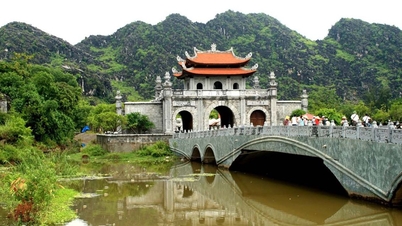
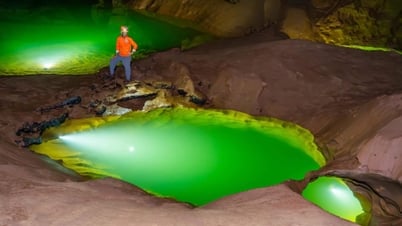
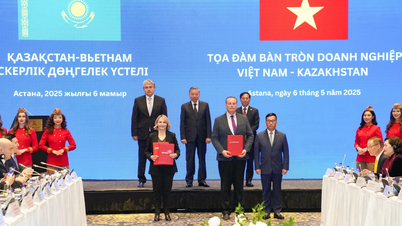

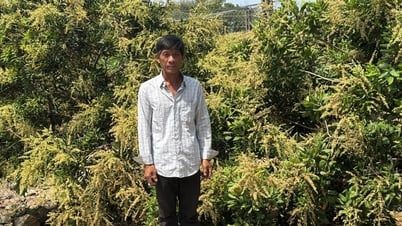





















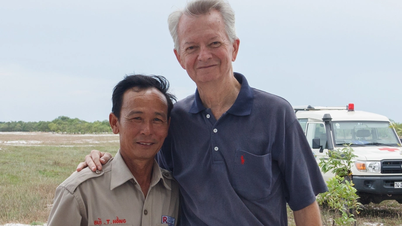











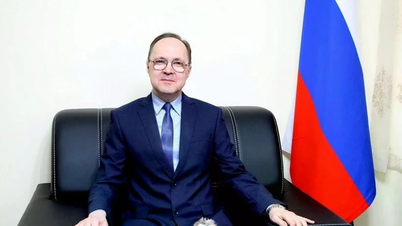
![[Photo] Prime Minister Pham Minh Chinh talks on the phone with Singaporean Prime Minister Lawrence Wong](https://vphoto.vietnam.vn/thumb/402x226/vietnam/resource/IMAGE/2025/5/8/e2eab082d9bc4fc4a360b28fa0ab94de)
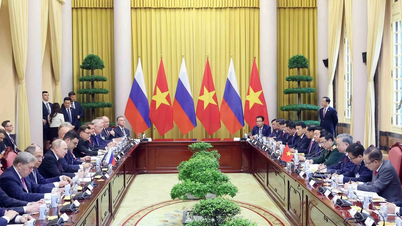

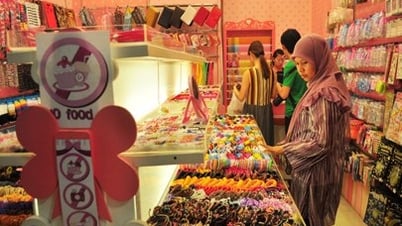


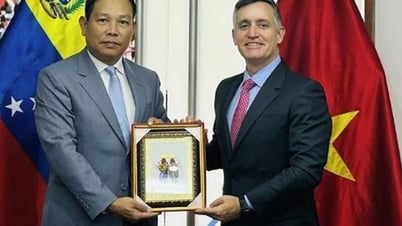

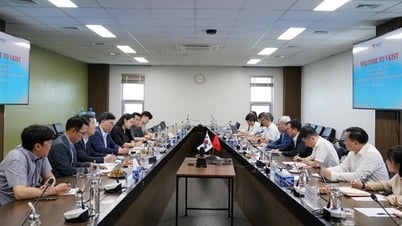


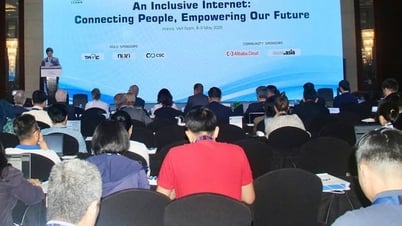


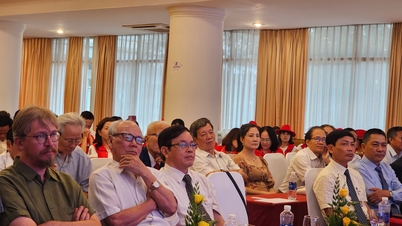
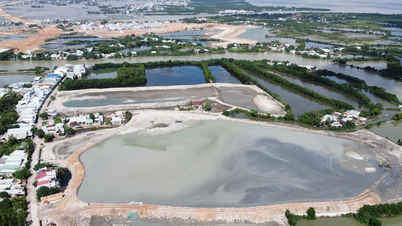



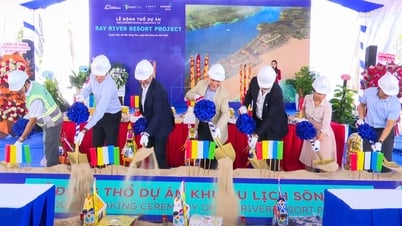

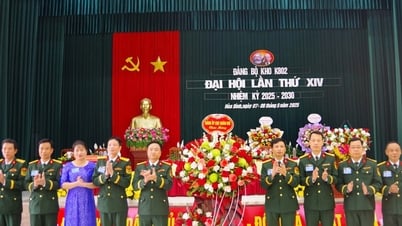












Comment (0)